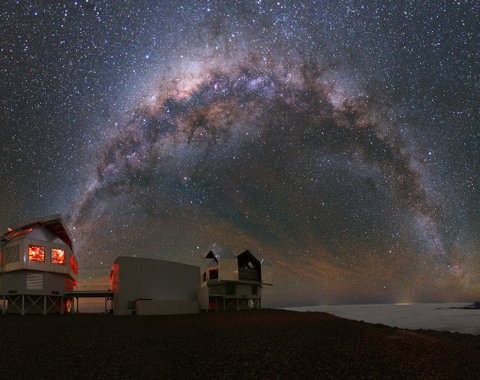2015 Astronomy Lecture Series

Each year the Observatories organizes a series of public lectures on current astronomical topics. These lectures are given by astronomers from the Carnegie Observatories as well as other research institutions. The lectures are geared to the general public and are free.
2015 Season
March 30, April 13, April 27 and May 11.
All four lectures this year will be held at A Noise Within, the theater located at 3352 East Foothill Blvd, Pasadena, CA 91107 (just North of the 210 Freeway, take the Madre street exit). Free parking is available in the Metro Gold Line parking structure just South of the theatre. Enter the structure East off Sierra Madre Villa Ave. (if you are traveling North on Sierra Madre Villa) or West off Halstead Street. Click here for a map which depicts the site with the theatre, parking structure, and surrounding streets. Visit www.anoisewithin.org for directions and more information. All lectures are free and open to the public, but seating is limited. Please arrive early. Doors open at 6:45 PM and all lectures start at 7:30 PM. Light refreshments will be served in advance of the lectures.
The 2015 Astronomy Lecture Series is organized by Dr. John Mulchaey, Interim Director of the Observatories. For more information, please contact 626.304.0250 or visit obs.carnegiescience.edu.
Schedule
Dr. John Mulchaey
Staff Scientist
Carnegie Observatories
The light we see with our eyes only tells a small part of the Universe's story. To get a complete picture of how the Universe works, astronomers must study objects over the full range of light, the electromagnetic spectrum. This includes gamma rays, X-rays, ultraviolet, visible, infrared, micro- waves and radio waves. Each type of light requires different instruments, and provides unique information about the source that emitted it. Dr. Mulchaey will explain how Carnegie astronomers and their colleagues are combining observations across the electromagnetic spectrum to help solve the mysteries of the Universe.
Watch recordingDr. Matthew P. Scott
President,
Carnegie Institution for Science
Carnegie Astronomy is also part of Carnegie Science and the study of all living species. From ancient single-celled organisms evolved multicellular animals whose immense numbers of specialized cell types—skin, muscle, nerve—allow division of labor. Each cell type forms in the right place, is suited to its task, and activates certain genes. Powerful cell-to-cell communication systems organize structured tissues such as lungs, limbs and brain. Dr. Scott will discuss half-billion-year-old genes that have been gradually modified to give rise to the vast diversity of animals.
Watch recordingDr. Juna Kollmeier
Staff Scientist,
Carnegie Observatories
Black holes remain among the most enigmatic objects in the universe. Using both computer simulations and traditional analytic theory, Dr. Kollmeier is making major discoveries showing how tiny fluctuations in density in the early universe have become the galaxies and black holes that we see after 14 billion years of cosmic evolution. In this Lecture, Dr. Kollmeier will review our basic knowledge of black holes and explore outstanding mysteries
regarding their formation and structure.
Dr. Robert P. Kirshner
Clowes Professor of Science,
Harvard University
The expanding universe was discovered at Mount Wilson almost 100 years ago. But there is something new! In the past 20 years, astronomers have found that cosmic expansion is speeding up, driven by a mysterious “dark energy” whose nature we do not understand. Dr. Kirshner, one of today”s preeminent astrophysicists, is the recipient of many prestigious awards, including the 2014 Breakthrough Prize in Fundamental Physics (sponsored by Google, among others), as well as the 2014 James Craig Watson Medal of the National Acad- emy of Sciences for “service to astronomy.”
Watch recording